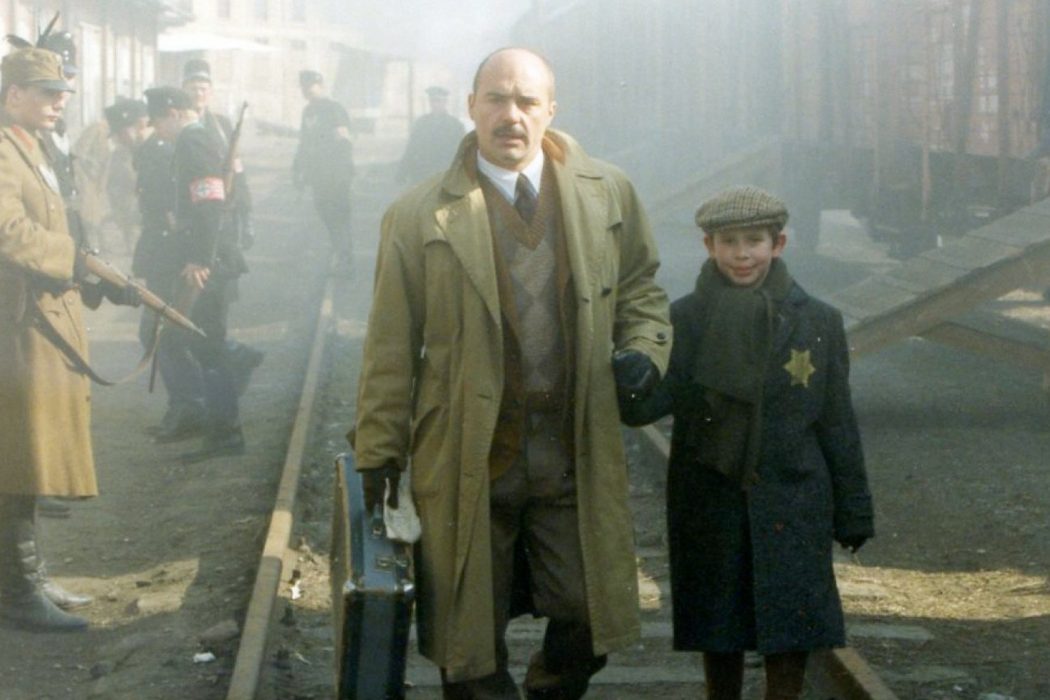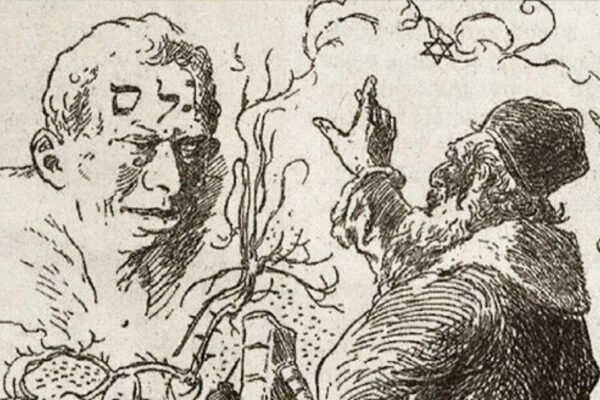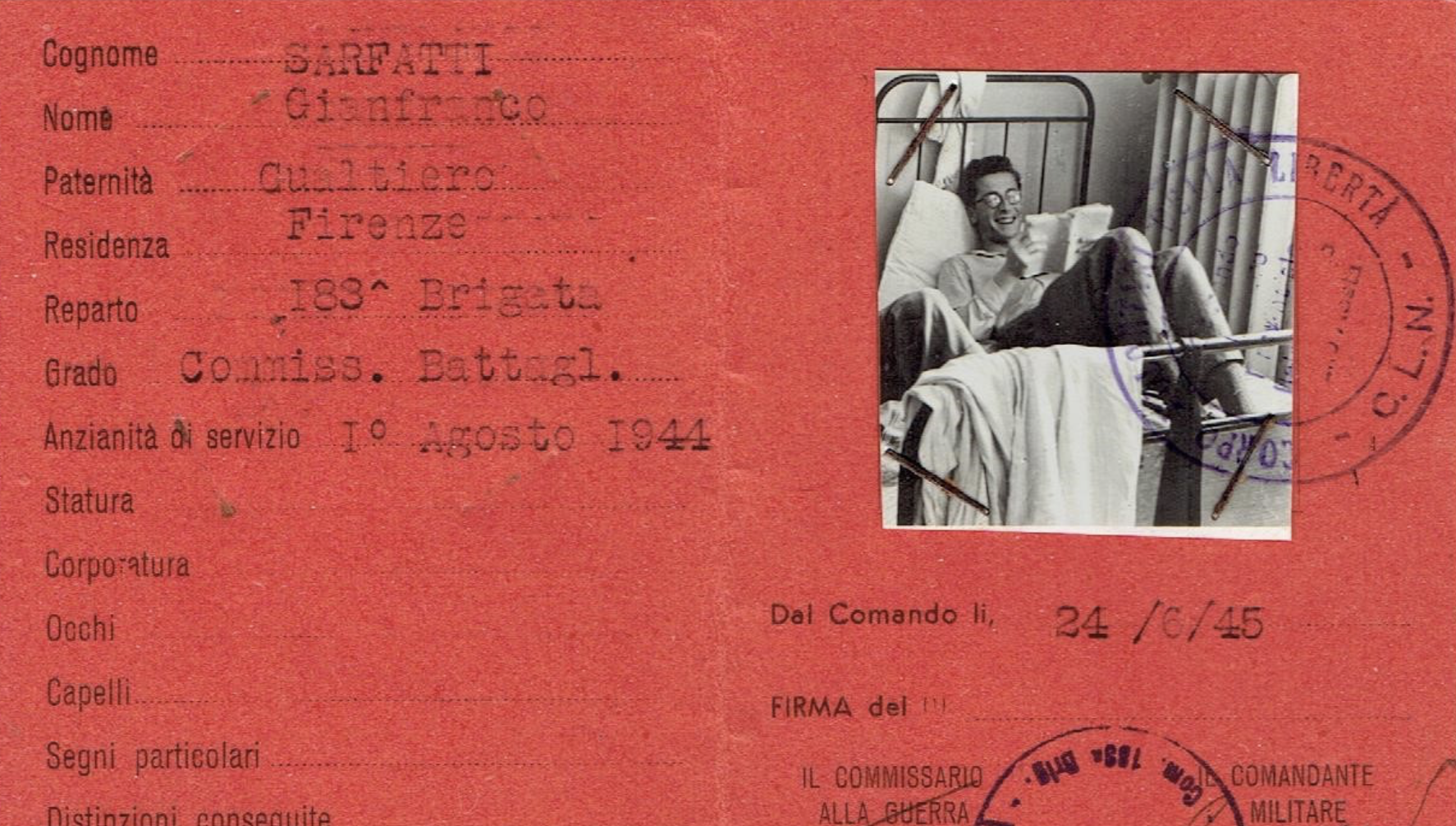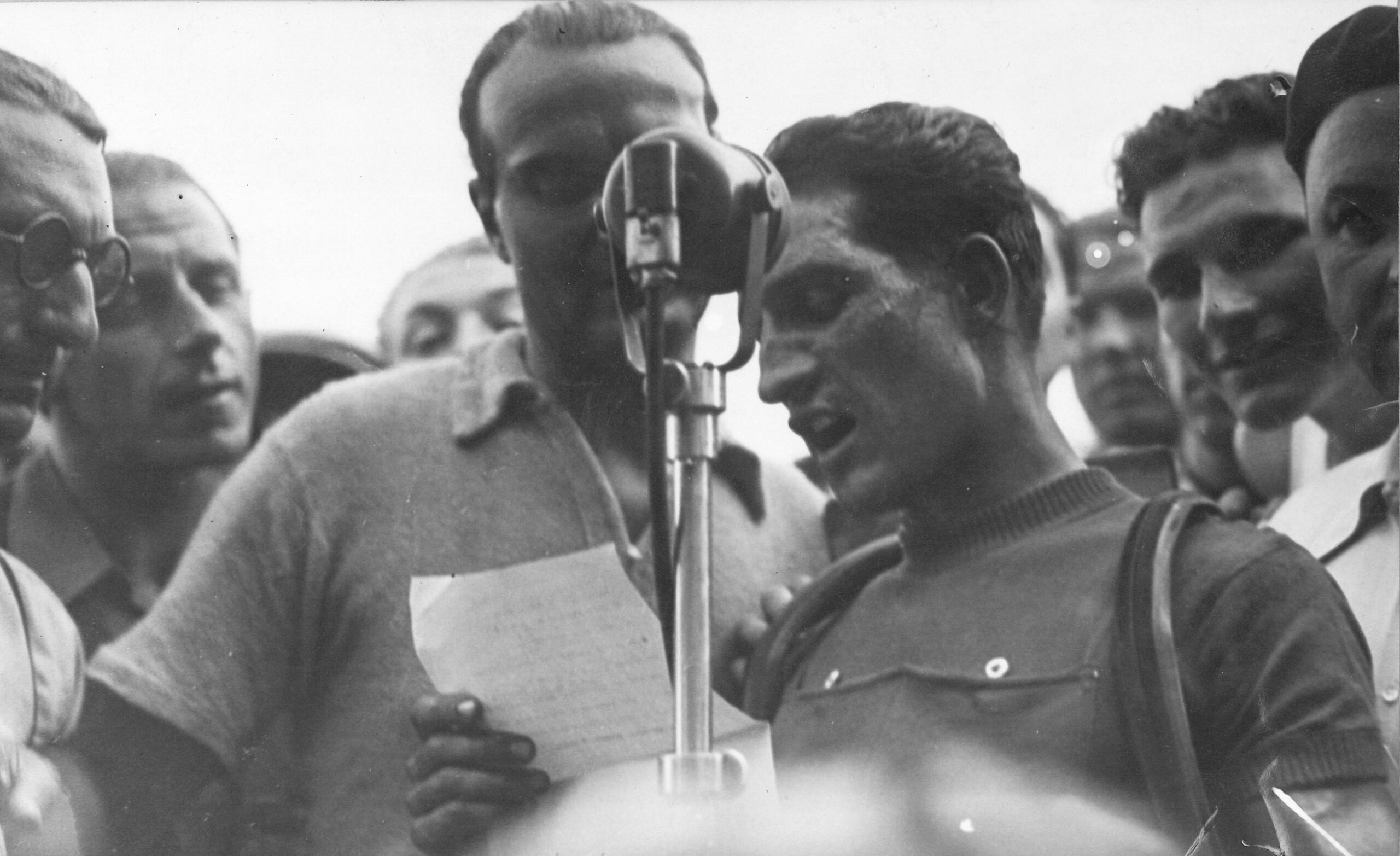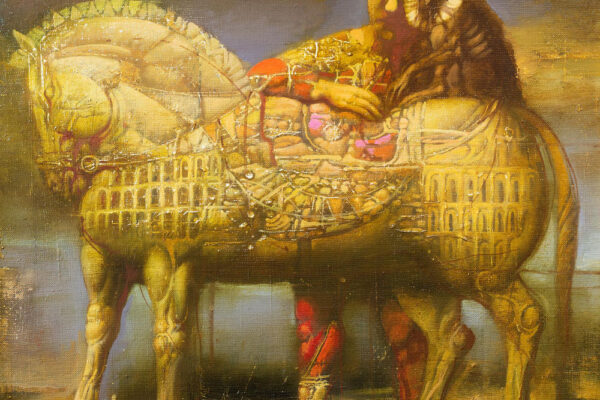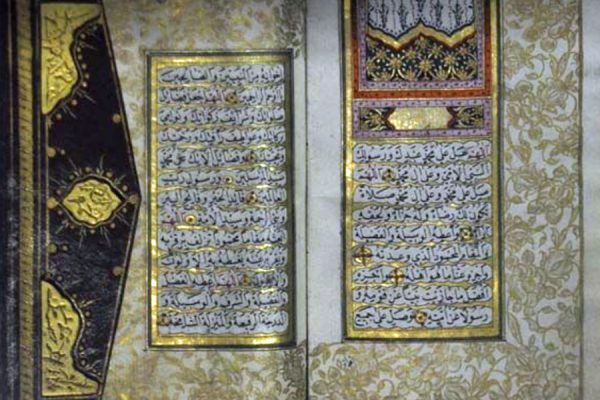The reception of the TV miniseries Perlasca: un eroe italiano in Italy.
This article is an adaptation of an essay by the same title published in Memory Studies, 2010. Emiliano Perra is a Senior Lecturer in Modern European History. Before joining the University of Winchester in 2011, he was Rome Fellow at the British School in Rome. He is one of the Editors-in-Chief of the Journal of Perpetrator Research, and a founding member of the Perpetrator Studies Network, and a Fellow of the Royal Historical Society. His publications include Conflicts of Memory: The Reception of Holocaust Films and TV Programmes in Italy: 1945 to the Present (Oxford: Peter Lang, 2010); ‘Intermittently Americanized? Italian Debates on Holocaust Cultural Products’, in Hans Krabbendam (ed.), American Responses to the Holocaust: Transatlantic Perspectives (Frankfurt: Peter Lang, 2017).
As the Holocaust becomes increasingly present in the political discourse in the US, Europe and Israel, this reflection by Emiliano Perra published in 2010 puts in historical context an important cultural and political shift in Italian memory politics.
In the over seventy years separating us from the end of the Second World War, Holocaust remembrance and representation have changed substantially.
The Holocaust is such a vast and multifaceted event that it can be remembered and commemorated in ways that meet the demands of shifting cultural and political contexts. This quality of the Holocaust has played a significant role in its rise as a central feature of contemporary Euro-American memory culture. It is almost a truism that popular feature films and television have been instrumental in this widespread rise in Holocaust consciousness and have contributed enormously to shaping how societies discuss and remember the event. In modern societies, the media, including television and newspapers, play a key role in forming public memory. As Taylor Downing has noted, “many people around the world who will never pick up a history book will derive most of their views about the past from television programs”.
However, television products concerning historical events are not simply abstract cultural artifacts. It is equally important to investigate how these products are interpreted, a process involving social, cultural and political practices. Successful television products and the responses they garner influence the way in which a society “remembers” events, of which virtually no viewers/citizens have direct experience. This notion of remembrance distinct from individual or group experience ultimately refers to the construction of public memory as a social and cultural process.
This article addresses the question of how the public memory of the Holocaust has been constructed in Italy in the last decade of the 20th century and the first of the 21st, a period marked by significant cultural and political changes, including the rise to mainstream government position of the political heirs of Fascism.
To this end, this article analyzes the public debates surrounding the figure of Giorgio Perlasca, a committed fascist and rescuer of Hungarian Jews whose acts were publicly acknowledged only 40 years after the war. Perlasca came into public view through the miniseries Perlasca: un eroe italiano, aired on RAIUNO on 28 and 29 January 2002 (Negrin, 2002).
Perlasca is a high-profile production of the Italian state broadcast RAI. The high scale investment in this specific Holocaust story was the result of a combination of factors. Perlasca followed the success of Roberto Benigni’s 1997 blockbuster film La vita è bella (Life is Beautiful) and the establishment of Remembrance Day (Giorno della Memoria) in 2001; moreover, it was a story of rescue centered on an Italian hero, but one that was not set in Italy. As Giacomo Lichtner argues persuasively in his studies, this is a recurring pattern in Italian film and television representations of the Holocaust.
While the experience of Nazism and decolonization have to some extent forced Germany and France to come to terms with their respective pasts, post-war Italian culture has produced selective patterns of remembrance, often based on establishing an exclusively positive redefinition of national identity and construing the Holocaust as a terrible, but essentially foreign event.
Since Perlasca’s case is representative of broader and deep-seated strands of Italian Holocaust discourse, it is first necessary to explain the context in which his symbolic figure emerged.
The Italian case offers a complex and contradictory picture, rooted in the country’s specific history. Fascism was born in Italy. It was the ruling force for 20 years and enjoyed a large degree of popular consensus. Whilst a substantial proportion of semi-scholarly works assert that the anti-Semitic laws promulgated by the regime in 1938 were lenient, this was not the case. The laws were in fact widely enforced and involved all sectors of society.
Contrary to the thesis put forward by historians such as Renzo De Felice, 1938 did not mark the first, irreparable fracture in the support hitherto enjoyed by fascism. Without denying acts of solidarity among the population, historiography has shown that many Italians approved of the persecution of the Jews and directly participated in it. In the final stages of the persecution following the German invasion, the Italian Social Republic (RSI) headed by Mussolini actively participated in the deportation to death of approximately 7,300 Jews from Italy.
Italy’s claim of a high survival rate of Jews was widely capitalized on during the postwar period to establish rescue as the hegemonic narrative of the Holocaust in Italy.
Although disagreeing in their analyses of fascism, commentators from across the political spectrum focused on downplaying Italian complicity by shifting the burden of guilt onto the Nazis and their collaborators, thus corroborating, as Sergio Focardi wrote, a binary division between the ‘evil German’ and the ‘good Italian’. The pervasive representation of Italy as more committed to the humanitarian rescue of Jews than to collaborating with the Germans helped embed this narrative in public memory.
Although the image of the “good Italian” first appeared at the end of the 19th century to satisfy Italy’s need to address its first colonial ventures and massacres, its protean nature has carried it forward into the following century. Portraying Italians as cunning, law-bending but ultimately kind-hearted and tolerant soldiers and citizens, this stereotype remained dynamic throughout the post-war period. In fact, it perhaps represents the single most important unifying narrative of the war, within an otherwise deeply fractured spectrum of memory politics.
The rise of Giorgio Perlasca to the pantheon of national heroes owes both to the centrality of rescue, kindness and innocence in the Italian public discourse on the Holocaust, and to the transnational paradigm shift of Holocaust narratives around the figure of the rescuer. The ways in which this shift played out are culture-specific.
An early example of the role of television in shaping the memory of the Holocaust is the 1986 documentary by Lucio Caracciolo, Il coraggio e la pietà: gli ebrei e l’Italia durante la Guerra 1940–1945 (The courage and the pity: The Jews and Italy during the 1940–1945 War). The program presented itself as a counter-point to Marcel Ophüls’ 1971 documentary film Le Chagrin et la Pitié (The sorrow and the pity). While the French documentary exposed the misdeeds of Vichy’s government and highlighted French collaboration in the Holocaust, Il coraggio e la pietà was constructed around the idea that Italians during the war were immune from anti-Semitism. One of the first television programs entirely dedicated to the Holocaust in Italy reassured viewers that ‘Italian bureaucracy has inimitable ways of wasting time, and it is comforting to acknowledge that this irritating characteristic was used for a good cause’. A widespread negative stereotype was thus reversed into a heartening self-representation. As we will see, the Perlasca case presented many analogies with this earlier example.
The redefinition of the image of the innocent and victimized country redeemed by the Resistance, which began in the 1980s, represents the most relevant element of discontinuity in Italian public memory of the war and the Holocaust. During this decade, the Holocaust also acquired growing centrality in Western memory culture.
In Italy, this trend coincided with the crisis of the Resistance as the foundational value of the Republic. The crisis reached a point of no return in the early 1990s during the Tangentopoli (Bribesville) scandal, but had already become apparent in the previous decade, when challenged by a wave of historical revisionism. The term ‘historical revisionism’ indicates a complex set of discourses aimed at doing away with anti-Fascism as the cornerstone of Italian democracy, and at replacing the dichotomy between Fascism and anti-Fascism with that between totalitarianism and democracy. This shift, which had its scholarly point of reference in historian Renzo De Felice, allowed to lump together Nazism and Communism in public debates, while keeping Fascism out of the equation. In the 1990s, this same shift was instrumental in legitimizing the neo-fascist political party, Italian Social Movement (MSI), and its post-fascist offspring National Alliance (AN).
Starting in the 1980s, the rise of the Holocaust in public historical discourse and the decline of the Resistance narrative, led to a much more dynamic but also problematic reconfiguration of memory. If on the one hand, a broader variety of voices participated in the debate on the Holocaust, on the other, these revisionist trends legitimized an equivocal paradigm based on indifference towards the various sides at war in Italy, according to which all were victims and perpetrators to the same degree.
Two important aspects of this revisionist trend were a sustained criticism of potentially controversial episodes of the Resistance, especially those involving Communists, and the representation of Fascism as a popular, modernizing, and tolerant regime, except for its persecution of the Jews.
This ‘normalization’ of Fascism, that some historians defined ‘de-fascistization of Fascism,’ was promoted in conservative and ‘post-fascist’ circles and disseminated through the media. Television played a key role, serving a twofold purpose: to highlight the contrast with Nazism and at the same time reinserting Fascism into the longue durée of Italian history.
The Holocaust occupied a strategic place in the development of this narrative. In recent years, Italy’s participation in the persecution and destruction of the Jews, the most obvious point of junction between Nazism and Fascism, has become the only Fascist crime to be unanimously acknowledged and commemorated. As a result, the Holocaust has become the locus of a shared idea of nationhood, that does away with the Fascism/anti-Fascism divide and redefined the self-acquitting stereotype of the ‘good Italian’. The parable of Giorgio Perlasca offers a privileged vantage point for the analysis of this radical shift.
The Historical Giorgio Perlasca
Born in 1910, Giorgio Perlasca came of age as a firm supporter of fascism, volunteering for the wars in Abyssinia and Spain. However, with the rise of the Italian Social Republic, he distanced himself from the regime and settled in Budapest. When the Nazis invaded Hungary in October 1944, a few thousand Jews found shelter in a cluster of buildings belonging to neutral countries such as Spain, Switzerland and Sweden.
After the Spanish Ambassador left, at the request of the embassy’s advisor Dr. Farkas, and of László Szamosi, an activist in the underground, Perlasca posed as a Spanish diplomat. In this guise, he took control of entire buildings on the supposed authority of the Spanish embassy (which had had ceased working), and of a country, Spain, of which he had never been a citizen. Through bribery and false statements, he managed to save over a thousand Jews.
The story remained largely unknown for more than 40 years. This was partly attributed to Perlasca’s modesty, a factor that contributed to enhancing his reputation further once his account rose to public attention. Already in this formulation, however, there is an element of ‘myth’. In fact, Perlasca did not remain entirely silent. Indeed, he made attempts to promote his own reputation. Immediately after the war, he sent reports of his actions in Hungary to the governments of Spain and Italy, as well as to a local newspaper. In 1948, he also met with leading Christian Democrat politicians including Prime Minister Alcide De Gasperi in the hope of obtaining public recognition, but none of these attempts proved successful. After the broadcast of the miniseries, a letter sent in 1970 to retired diplomat Paolo Vita-Finzi was made public. In the letter, written at a time when he was struggling financially, Perlasca lamented the silence and failure to acknowledge his contribution on the part of the Spanish and Italian governments.
Personal resentment aside, this last point highlights a more problematic aspect of the silence on Perlasca. For different reasons, Spain, Hungary and Italy all had little interest in publicly acknowledging his deeds. According to former diplomat and historian Alberto Indelicato, in Italy several factors conspired to silence this episode. First, Perlasca acted outside Italian borders to save non-Italian citizens under the flag of a state, Spain, whose regime was not very popular in post-war Italy. Second, Perlasca’s political views and biography made him a rather unpalatable figure. Not only had he volunteered in two Fascist wars; after the armistice with the Allies was made public on 8 September 1943, he neither joined Mussolini’s Social Republic nor took part in the Resistance. Moreover, he supported the monarchy in a country that switched to a Republic in 1946. Finally, after the war he briefly joined the short-lived populist movement Uomo Qualunque, and later supported the neo-fascist party MSI.
Perlasca’s political biography was at odds with dominant narratives about the war in which the memory of the Holocaust and of the Resistance frequently overlapped. This was a consequence of the centrality of the ‘anti-fascist paradigm’ based on the continuity established between the Resistance and underground anti-fascism before it, which was in turn the Republic’s main source of legitimacy.
In line with this blurring of Holocaust and Resistance history, the dominant narrative attributed the stories of rescue to the influence of anti-fascism during that historical period. Rescue was seen as a subcategory of anti-fascism. In other words, the redemptive value of the Resistance explained Italy’s response to the Holocaust. As a result, the specificity of the Holocaust, including the stories of rescue by fascists, did not fully emerge.
After 40 years of silence, in 1987 a group of Hungarian survivors tracked Perlasca down and, in 1989, Yad Vashem officially declared him ‘Righteous among the Nations’. Following the recognition, Il Secolo d’Italia, the official MSI newspaper, interviewed him. It is somewhat surprising that even the neo-fascist right waited over 40 years to run this story. From their perspective, what made Perlasca’s case unappealing was that his acts of rescue signaled not only a rejection of anti-Semitism, but a much broader refusal of the alliance with Nazism, the participation in the Second World War, and the establishment of the RSI.
The story reached a much broader television audience in April 1990, when the popular current affairs series Mixer dedicated a special program to it, based on interviews with Hungarian survivors and with Perlasca himself. While Perlasca’s story, sanctioned by an institution above the fray of Italian politics such as the Israeli state might have emerged even without the support of television, it is clear that this special documentary was instrumental in raising Perlasca’s profile in Italy’s public memory. The documentary itself has re-run on several occasions, and portions of it have been replayed by broadcasts ranging from highbrow or educational programs, to current affairs and news series, to popular afternoon entertainment shows. Moreover, Enrico Deaglio, who co-authored the program together with Gianni Barcellona, used the research conducted for the documentary to write a best-selling book entitled La banalità del bene (1991) (The banality of good), which presented itself as a counterpoint to Hannah Arendt’s landmark account of the Eichmann trial.
In 1992, shortly before his death, Perlasca was awarded the Gold Medal for Civil Merit, the highest civilian decoration in Italy. In addition to this, a memorandum he wrote was published in 1997 in another relatively successful book entitled L’impostore.
Among other factors, this process was facilitated by the success of Steven Spielberg’s film Schindler’s List, which made a powerful and influential contribution to situating the rescuer-figure at the center of contemporary memory culture of the Holocaust. Thus, while the miniseries introduced Perlasca to vast audiences, it did not come out in a vacuum; rather, it capitalized on, and represented the culmination of a decade-long process.
The Fictional Giorgio Perlasca
By television standards, Perlasca: un eroe italiano was a relatively high budget international co-production involving Italy, France, Hungary and Sweden. Giorgio Perlasca was played by television star Luca Zingaretti who had played the compassionate and beloved Sicilian police inspector of the series based on Andrea Camilleri’s Il Commissario Montalbano (1999). The director Alberto Negrin (whose Jewish parents relocated to Morocco to escape persecution after 1938) was a veteran of the television on historical themes. The script was written by Stefano Petraglia and Sandro Rulli, who had already co-written Francesco Rosi’s film The Truce (La tregua, 1997), based on Primo Levi’s book (1963).
RAI Television went to great lengths to ensure Perlasca’s success. The miniseries was introduced to the public in several talk shows prior to the broadcast of the first episode. Perlasca’s story was presented as a morality tale focusing on his heroism during the events and his modesty after the war. His fascist beliefs were left in the background as the priority was to make his story relevant to potentially all viewers, regardless of their political orientations.
These references to the miniseries in popular shows were supplemented by an impressive barrage of advertisement. Moreover, on the eve of its airing, a shortened version of the miniseries was screened in the Chamber of Deputies before some of the highest representatives of Italian and Israeli institutions. The launch was effective and the series was a success, watched by over 11 million viewers (38.91%) on the first night and almost 13 million (43.81%) on the second. As noted by one commentator, these figures show that Perlasca became an event in its own right, and its significance was enhanced further by the fact that it was aired around the time of Remembrance Day.
The Holocaust as a vehicle of post-anti-fascist national identity
Thus, while Perlasca’s political heterodoxy had made his story unappealing in the past, in 2002 the country united in front of the screen to commemorate his actions. The public debate sparked by the miniseries suggest some of its traits may have played a role at that turn of Italian politics. First, the miniseries invited viewers to side with absolute good against absolute evil, a binary division well established in popular culture representations of the Holocaust. What is noteworthy about Perlasca is that absolute good happens to be incarnated by a stereotypical Italian. Similarly to Caracciolo’s documentary, the story of Perlasca transformed a negative stereotype into a positive emblem of humanitarianism. Co-screenwriter Sandro Petraglia explicitly claimed that Perlasca’s buoyant manners, ingenuity, courage, and ability to lie and cheat made him ‘strongly Italian’. The decision to subtitle the miniseries ‘An Italian Hero’ served to extend his attitude to the whole nation in relation to the persecution of the Jews in Italy. In other words, the work corroborated the following syllogism: a fascist of the likes of Perlasca bent the rules to do good; ‘Italians’ bend the rules too; ‘Italians’ (including fascists, and it is this addition that makes Perlasca’s case remarkable) did good, notwithstanding the anti-Semitic laws. The behavior of those who did not do good was simply “un-Italian”.
The miniseries’ decidedly nation-specific quality was heavily influential in shaping Italian responses to it. In fact, while American reviewers saw Perlasca as a cliché-ridden, unmoving vulgarization of the Holocaust, reactions in Italy were overwhelmingly positive. The conservative newspaper Libero pointed out that the ‘character’s outgoing and even scoundrel-like Italianness was [the miniseries’] trump card’. The Italian Catholic newspaper Avvenire added that by using Italians’ own characteristics, Perlasca gave them back a sense of national honor, thus contributing to restore a shared collective identity, one that sets aside the fascism/anti-fascism divide. La Stampa wrote that Perlasca made Italians feel proud of themselves, just as the 1982 football World Cup winning team had done. The left-wing press also recommended the miniseries to readers and acknowledged Perlasca’s unqualified ‘Italianness’.
However, Perlasca was not just an Italian. The second crucial element of the Perlasca political cultural formula was that he had been a fascist. Perlasca’s heterodox fascism fit well with the new political stance of the right. Since its formation, the post-fascist party Alleanza Nazionale had distanced itself from the Fascist regime in regard to the Holocaust as a precondition of its respectability. The memory of Perlasca played a part in this process.
A paragraph in the 1995 Fiuggi Convention, which marked the birth of the new political party, explicitly condemned every form of anti-Semitism, even when ‘camouflaged with the propaganda of anti-Zionism and anti-Israel polemics.’ Among the first supporters of the statement, which was drafted by journalist Enzo Palmesano, was Franco Perlasca, son of Giorgio and mid-rank party functionary. Through the mediation of his son Franco, Perlasca’s figure was appropriated to strengthen and legitimize the party’s political and cultural shift.
This reframing was consistent with a number of decisions made by the party before and after the telecast, such as the establishment, in 1997, of a research center dedicated to the memory of Perlasca, aimed at furthering the dialogue between AN and Italian Jewish (and Israeli) institutions. Furthermore, only days prior to the broadcast and the annual commemoration of Remembrance Day, AN president Gianfranco Fini distanced his party from its fascist heritage by retracting his 1994 praise of Mussolini as ‘the greatest statesman of the century’. In September 2002, interviewed by the Israeli liberal newspaper Haaretz, Fini explicitly apologized for the sufferings caused to the Jews of Italy by the racial laws of 1938. The following year, during his visit to Israel, he denounced ‘Fascism’s infamous racial laws’.
Fini’s increasingly outspoken rejections of Fascism reconciled the Italian right with the State of Israel and with the Italian Jewish Communities. As columnist Barbara Spinelli noted, the story of a Fascist sympathizer who rejected anti-Semitism and heroically rescued Jews while maintaining his right-wing political identity acquired a special political and cultural value. It challenged the established anti-fascist image of AN as trapped in its own past, as well as anti-fascism’s exclusive claim of solidarity with the Jews.
Perlasca’s own distancing from Salò, which for years had hindered his public recognition by the MSI, was finally seen as an asset. Perlasca could be presented as a precursor of the party’s post-fascist stance. However, Fini’s and AN’s outright rejection of fascist anti-Semitism was accompanied by a more problematic counterclaim. If the only unforgivable crime of the Regime was its participation in the Holocaust, then coming to terms with it would clear AN from any burden of the past. Maurizio Gasparri, at the time Minister of Communications, gave a copy of the miniseries to Israeli president Moshe Katsav, presenting it as the story of ‘a fascist who saved five thousand Jews, and of whom [the Right] should not be ashamed’. The Minister of the Italians in the World and veteran of Mussolini’s Italian Social Republic, Mirko Tremaglia went even further: Perlasca was a ‘truly powerful and touching film … which … exalted the splendid humanity and heroism of an Italian Fascist’.
Nostalgic excesses aside, there is a further troublesome aspect in the debate surrounding Perlasca, best exemplified by a 2002 article by right-wing intellectual Marcello Veneziani. According to Veneziani, Perlasca’s case was not an isolated one, because both the fascist authorities and members of the Italian public sheltered as many Jews as possible. In Veneziani’s view, Italians behaved better than any other country during the Holocaust and should stop criticizing themselves. He then drew an insidious but telling parallel between the number of Italians killed in the ‘Communist foibe’ (a series of executions in Istria and around Trieste carried out by Yugoslav partisans) and that of Italian Jews exterminated in the camps, claiming that the former was higher. As noted in the first part of this article, far from being exceptional, this kind of competitive claim is part of a long-term revisionist trend of countering fascist crimes with anti-fascist violence perpetrated during and after the Resistance. It reflected a broader trend based on the comparison between the horrors perpetrated by Nazis and Communists.
This trend has encouraged the establishment of a memory implicitly aimed at erasing historical and moral distinctions. Consistent with this view, Veneziani’s article ended by questioning why only the Holocaust is commemorated on Remembrance Day.
In 2004, the Italian Parliament, lead by a centre-right majority which included AN, instituted the Day of Memory (Giorno del Ricordo) for the victims of foibe, to be commemorated every 10th of February. The day marked the anniversary of the 1947 Paris peace-treaty sanctioning Italy’s loss of the territories east of Trieste, and the ensuing migration of 300,000 Italians from Yugoslavia. The subtext underlying Remembrance Day and the Day of Memory, separated by a mere fortnight, implicitly compares the two tragedies, suggesting that while the Holocaust shows man’s inhumanity to man, the foibe represents what Communists did to Italians. The miniseries Perlasca and its reception were, among other things, the litmus test of this transformation.
Paradoxically, a selective memorialization of the Holocaust is being used in some quarters to re-legitimize Fascism. Italy’s persistent shortcomings in confronting its responsibilities in the Second World War have paved the way for this revisionist process. If, as this reasoning goes, Perlasca is one of the ‘Righteous among the Nations,’ his enthusiastic adhesion to Fascism, including volunteering to participate in the regime’s invasion of Ethiopia and its war against Republican Spain, is not a crucial blemish. According to this relativizing view, then, if what truly defines Italians’ innocence and guilt is their attitude concerning the Holocaust, and some Fascists heroically rescued Jews, then all differences between Fascism and anti-Fascism are automatically erased.
For many years, the story of Giorgio Perlasca was a fixture in the public debates on the Holocaust in Italy. Since the broadcast of the miniseries, his name has become the point of reference for the increasing number of stories of rescue (often by fascists) salvaged from oblivion and presented to the public, both in the press and in popular television programs. While this emphasis on rescuers is consistent with long-term trends in Italian narratives of the war and the Holocaust, the reductionist and leveling effect of the post-MSI era have raised criticism among historians and politicians alike.
However, there is also a more optimistic side of the story to take into account. The rise of Perlasca as the quintessential Italian rescuer, also in the light of his political beliefs, opened up space for a less charged approach to the issue of Italy’s responsibility during the Second World War. This is not so much in scholarly literature where it was already an established feature, but in the mass media, particularly television. Even in popular afternoon talk shows, Italy’s share of responsibility in the Holocaust is now generally acknowledged. However, this acknowledgment comes at the price of downplaying the regime’s crimes before 1938 and those not directly Holocaust related, as well as leveling out all distinctions between Fascism and anti-Fascism.
A further problem is that this type of popular media representation of the Holocaust invites emotional identification rather than critical reflection. This is characteristic of a country that, even when formally committed to memory, often fails to convert this memory into a system of values capable of orienting present and future choices. A more historically accurate understanding of Italy’s past, including a critical assessment of the figure of Giorgio Perlasca in public memory, would be a necessary step towards establishing that system of values.


